
Delhi4:51 PM | 28th April 2024
All India Council For Technical Education and a civil engineering veteran, Prof. T.G. Sitharam talks about his ambitious plans for engineering and technical students of India. In an exclusive conversation with Tanay Kumar

Prof. T.G. Sitharam, Chairman - All India Council for Technical Education (AICTE)
All India Council For Technical Education and a civil engineering veteran, Prof. T.G. Sitharam talks about his ambitious plans for engineering and technical students of India. In an exclusive conversation with Tanay Kumar, Special Correspondent, Education Post, the AICTE chairman informed that the council will soon launch a placement portal and minor degree courses, which are going to be beneficial for students, teachers and professors.

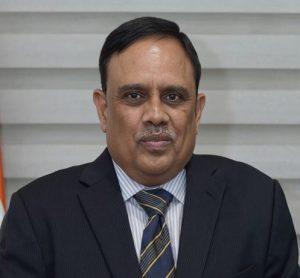
I did my primary and high schooling in two different government schools of Chitradurga, Karnataka. For my higher studies, I moved to National College in Bengaluru. As a student, I always had a thirst for knowledge and curiosity that pushed me to explore various subjects. I was lucky enough to have the most supportive parents who encouraged me throughout my learnings. They supported me, guided me and provided me with all the required resources so that I can pursue my dream without any hindrance. I must acknowledge the hard work my parents have put in to educate me and my sisters.
My parents always knew my potential and trusted it positively, their belief in me has actually worked as a fuel to boost my motivation and helped me to become the person I am today. I am so grateful for their guidance and the values they have instilled in me, which have been instrumental in my journey of personal and intellectual growth.
I come from a middle-class family. My father, T.S. Gundu Rao, who is now 87, was a village accountant and a farmer by profession. My mother, N. Vatsala who is 82 years old is a homemaker.
Both my parents live in our hometown Challakere in Chitradurga. I have three sisters who are graduates and are happily living in Bengaluru with their families.
My wife, Dr. M.V. Anuradha, is a scientist by profession. However, after we became parents, she decided to dedicate her full time to our children and I respect her decision. My son, Aditya Bhargava, who is 24-year-old, is pursuing his Master’s in Mechanical Engineering and my daughter, Arundhati Sitharam, is currently pursuing her Bachelor’s in Artificial Intelligence and Machine Learning.
Coming back to my education, I am proud to say that I have always been in the top list of students and also received a government scholarship which used to be conferred on the merit basis.
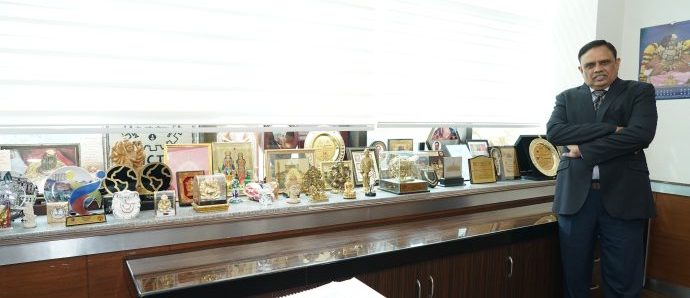
I completed my Bachelor’s in Civil Engineering in 1984 from the Government BDT College of Engineering in Davangere, Karnataka, which was then the part of the University of Mysore. I did my postgraduation from the Indian Institute of Science in Bengaluru in 1986 with a subbranch of Civil Engineering. After working for about a year, in 1988 I pursued for my PhD from the University of Waterloo in Ontario, Canada in the domain of Civil Engineering. I received research and teaching assistantship from the University of Waterloo for the entire period of my stay there.
Further, I moved to the University of Texas in the US from 1991 to 1994 for my post-doctoral studies in the area of Geomechanics. It was such an honor for me as I moved again to the Indian Institute of Science, Bengaluru in 1994, not as a student but as a faculty at the Department of Civil Engineering. I was also the Chair Professor in the area of Energy and Mechanical Sciences [Karnataka State Industrial & Infrastructure Development Corporation Limited (KSIIDC) Chair] at Indian Institute of Science, Bangalore from 2015 to 2018.


Geotechnical engineering is a discipline within Civil Engineering that focusses on behavior of geomaterials and engineering properties of earth materials using the principles of soil and rock mechanics for the design of earth structures. However, Geology and geophysics are related to the earth sciences. Geology primarily studies the earth’s materials, processes, and history, with a strong emphasis on rocks, minerals, and the formation of geological structures. Geophysics, on the other hand, explores the physical properties of the earth and its subsurface using physics and mathematics. It involves studying seismic waves, gravity, magnetism, and other geophysical phenomena to understand the earth’s internal structure and processes. The fields of geotechnical engineering and engineering geology have overlapping areas but geotechnical engineering is aligned more towards civil engineering. Geotechnical engineers use their knowledge to determine the properties (physical, chemical and mechanical) of soil and rock for the design of earthworks, foundations, earth dams, embankments, bunds, tunnels and retaining structures. For last 30 years, I was involved in teaching geotechnical engineering subjects and carried out research in broad areas of geotechnical engineering, earth sciences, design of earth filled dams, site investigations of ground conditions to determine seismic hazard at ground level considering local site effects and determine depth of foundations.
Thankfully, I was part of a committee, which has been constituted to review foundation work related with Ram temple, Sri Ram Janmabhoomi Tirth Kshetra, Ayodhya; and to suggest effective measures required for the temple’s foundation. I was also listed in the world’s top 2% of scientists for the most-cited research scientists in various disciplines by Stanford University in 2020, 2021 and 2022. I carried out seismic micro-zonation of many urban centers in India, like Bengaluru, Lucknow, and Delhi NCR region. I was the President of Indian Society of earthquake Technology (ISET) located in IIT Roorkee for the last 4 years until April 2023. I was also recipient of Honorary fellowship of Indian Geotechnical society (IGS) and in addition I was Executive Committee member of Indian Geotechnical Society and received life time contribution awards from IGS.


I started the Centre for Infrastructure, Sustainable Transportation and Urban Planning (CISTUP) at the IISc in 2009, the year which marked the centenary celebrations of the institute. Base funding for the program was from the administrator of the Government of Karnataka and many valuable inputs were received from prominent professors and personalities. Total fund received was Rs. 30 crores.
The vision of CISTUP was to become an eminent center for impactful and multidisciplinary research, education, and technology transfer in the following areas: multimodal transportation science, systems engineering, and technology; sustainable transportation systems and urban planning; and Infrastructure systems.
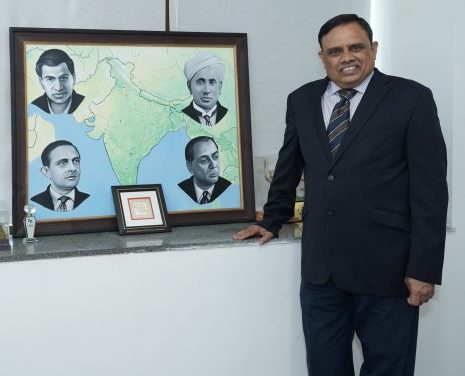
The mission was to provide thoughtful leadership for planning, operation, design, management, and policy of transportation systems in India through the following activities:
The introduction of the PhD program in Transportation and Infrastructure Engineering at IISc Bengaluru stems from the critical need to address the complex challenges faced by transportation systems and infrastructure networks. This specialized branch of research recognizes the indispensable role of transportation in economic growth, sustainability, and societal well-being. By focusing on this field, the program aims to cultivate a pool of experts who can develop innovative solutions, optimize transportation networks, improve infrastructure resilience, and advance sustainable mobility options. It is a timely initiative that aligns with the evolving needs of a rapidly urbanizing world and holds immense potential for shaping the future of transportation and infrastructure engineering.


The Master in Liberal Arts program introduced by IIT Guwahati offers Indian students a unique opportunity to leverage their career in non-STEM fields. While STEM courses are often favored by parents, but pursuing liberal arts can provide a range of benefits. Liberal arts education develops critical thinking, communication, and problem-solving skills, which are highly valued in today’s dynamic job market. Students can explore diverse subjects such as literature, philosophy, social sciences, and arts, gaining a well-rounded education. This multidisciplinary approach prepares them for a variety of careers, including management, journalism, public policy, entrepreneurship, and creative industries. Embracing liberal arts opens doors to a world of possibilities beyond traditional STEM pathways.
Today, there is no need for parents to pressurize or advice their children to opt only for science or technology courses.
Today, with confidence and conviction, anyone can study any course and can have ample of opportunities. Secondly, thanks to the National Education Policy 2020 (NEP), which offers freedom to take subjects and get evaluated.
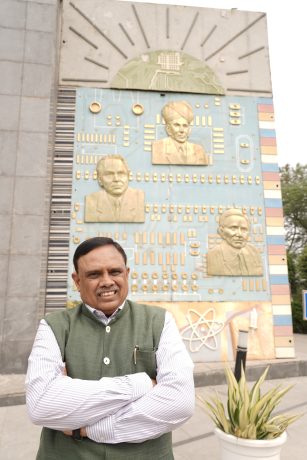
As the director of IIT Guwahati, I was responsible for creating five new schools and five new academic centers in trans-disciplinary areas at IIT Guwahati during 2020-21. During my tenure of three and a half years, IIT Guwahati got the second rank in citation per faculty in India (Rank 41 globally) in the QS world ranking 2022. IITG jumped 95 ranks from 2019 to 395th rank globally in 2022. In the NIRF ranking, IITG ranked eighth rank in engineering in 2021 and earlier positioned at seventh rank in 2020. In the NIRF ranking, IITG maintained its seventh rank in engineering under my leadership. I also created some new industry Interaction and special initiatives (II&SI) cell at IITG and has attracted a large number of companies and incubated a large number of start-ups. I led research park and Technology Incubation Center at IITG effectively. I also improved research environment at IIT Guwahati and also successfully got additional philanthropic funds to start the school of Data Sciences and Artificial Intelligence; and, the School of Agro & Rural Technologies. I also planned to upgrade scientific infrastructure at IIT Guwahati. I developed a strategic partnership with Government of Assam in establishing a medical school and a commitment from the government of Assam to start a state-of-the-art multispecialty hospital at IITG with partnership.
I also created a new Industry Interaction and Special Initiative (II&SI) group at IITG and has attracted 22 numbers of companies at Research Park and incubated a large number of start-ups in Technology Incubation Center of IITG. In 2020-2021, IITG has transferred about 20 technologies to industries during this pandemic.


IIT Guwahati has established several MoUs with universities worldwide, benefiting Indian students in numerous ways. These partnerships are targeted to foster collaborative academic and research activities along with exchange visits of faculty, research staff and students. Memorandums of Understanding (MoUs) have been signed with a number of institutions in Asia, Europe, Australia, USA and Canada which seek to promote institutional collaborations ranging from student and faculty exchange, student internships, joint conferences, and workshops to joint research projects. However, joint degree programs started with Gifu University is very unique one, where Japanese students also spend a couple of semesters at IIT Guwahati, besides IITG students taking courses in Gifu University.
Through the office of the Alumni and External Relations (AER) at IITG, we facilitated the interaction and developed academic, industrial and research collaborations. The collaboration with Ethiopia’s Bahir Dar Institute of Technology facilitated our students to gain cross-cultural experiences and exposure to different educational systems. Additionally, the MoU with Japan’s Kyoto Institute of Technology led to joint research projects, allowing Indian students to engage in cutting-edge research alongside international scholars. These collaborations enhanced the educational experience of Indian students, fostering global perspectives, encouraging knowledge exchange, and facilitating academic growth through international cooperation.

What are the challenges of proliferating higher education in North East India, especially technical and scientific, as you have tremendous knowledge of the region?

In the past, the challenges of proliferating higher education in the northeast of India were: geographical reasons (not well connected); developmental reasons (poorly developed areas); and, tensions between tribal people and migrant people from other parts of India.
However, change and improvement is happening for the last several years. Today, Guwahati is very well connected to the mainland and it is developing as a major route for linking Southeast Asian countries. IIT Guwahati has emerged as a destination for many students and faculty across India and has students coming from 600 districts of India. IIT Guwahati has played a major role in the development of higher education in the region conn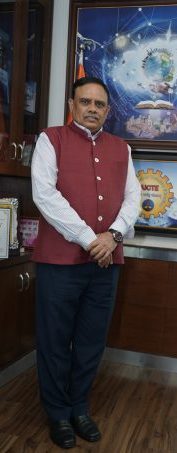 ecting all NIT’s in eight states and creating a scientific infrastructure for the entire northeast. IITG aims to promote entrepreneurship development and generate technology to benefit society.
ecting all NIT’s in eight states and creating a scientific infrastructure for the entire northeast. IITG aims to promote entrepreneurship development and generate technology to benefit society.
I was the director of the Indian Institute of Technology Guwahati, Assam for 3.5 years (from July 2019 to December, 2022). I am also in the Board of Governors at CIT, Kokrajhar and heading the Board of Management of North East Regional Institute of Science and Technology (NERIST), Nirjuli, Arunachala Pradesh. I am also the Director (additional charge) at Central Institute of Technology Kokrajhar, Assam for 1.5 years (May 2021-November 2022).
When COVID-19 started in March 2020, IIT Guwahati has been at the forefront to fight the spread of coronavirus and was providing scientific support, extension of sophisticated instrument facilities as well as involved in the immediate development of life-saving equipment to Assam State and Guwahati Medical College and Hospital (GMCH).
To improve the administration, research and teaching, which are the three pillars of any educational institute, attempts were made to properly co-ordinate these pillars for the success of the institute. In the last 28 years of IIT Guwahati’s journey, IITG has built the world-class infrastructure to impart quality education and research in the northeastern part of the country to serve the society at large. Today, IIT Guwahati is a tower of excellence contributing to the growth of nation and northeast in particular. Steps were taken to collaborate with institutions and organizations in northeast India to move from tower of excellence to be a network of excellence in the northeast.


We (at AICTE) have provided greater flexibility to students by opening all minor courses for all engineering disciplines, so that a civil engineering student can also pursue a minor course in information and technology and become job ready during their stay at the institute. To improve admissions in core engineering courses, including civil, mechanical and electronics, the AICTE will now allow students to pursuing these programs flexibly to also pursue a minor degree in any emerging area.
The minor degree concept was introduced by the regulator of technical education in 2020-21 to make students ready to work in the industry. However, not all minor courses are open for core engineering students. The new rules have been reflected in the AICTE’s approval process handbook (APH) of 2023-24.
The council allowed teachers of core engineering courses to take 18-credit online course on emerging areas for the upcoming academic session and get certified. The AICTE will launch a placement portal for engineering colleges in rural areas and semi-urban areas, for which more than 1800 industries have agreed to be partners to improve the situation for core engineering programs. The AICTE has created more than 2.5 crore internships. AICTE has asked all affiliated engineering colleges to promote these courses by interacting with industry experts, introducing compulsory internships, and providing hands-on experience.


This initiative aims at empowering faculties in technical institutions. The scheme focuses on enhancing the skills and knowledge of faculty members through specialized training programs. The procedures involve inviting proposals from reputed institutions, organizations, and industry experts to conduct faculty development programs in various domains. These programs cover emerging areas such as artificial intelligence, data analytics, robotics, and entrepreneurship. The ATAL Academy provides financial support to selected proposals, ensuring access to quality training for faculties and promoting the overall growth and development of technical education in India.


The collaboration between the AICTE and the Khadi and Village Industries Commission (KVIC) has yielded remarkable achievements in providing internship opportunities to students. Since the beginning of this partnership in January of the previous year, numerous students have benefited from this scheme, gaining valuable practical experience in the khadi and village industries sector. These internships have enabled students to develop essential skills, explore entrepreneurial ventures, and contribute to the sustainable development of rural communities. Looking ahead, the AICTE and KVIC aim to expand the program’s reach, fostering greater participation and encouraging students to actively contribute to the growth of the khadi and village industries in the future.
AICTE has also tied up with Unnath Bharat Abhiyan (UBA) to adopt five villages in and around AICTE institutions.


PARAKH (Performance Assessment, Review, and Analysis of Knowledge for Holistic Development) Students Learning Assessment by the All India Council for Technical Education (AICTE) has made significant strides in assessing the global competitiveness of students, faculty members, and stakeholders in India. This rational initiative has yielded several noteworthy achievements. First, PARAKH has enhanced the overall quality of technical education by introducing standardized assessments and benchmarks. It has fostered a culture of continuous improvement and accountability among educational institutions. Second, PARAKH’s focus on assessing student learning outcomes has resulted in better career prospects for graduates, as they are equipped with the necessary skills demanded by the global job market. Lastly, PARAKH’s implementation has enabled policymakers to identify areas for targeted interventions, leading to the refinement of educational policies and practices. Overall, PARAKH has played a pivotal role in strengthening India’s education system and enhancing its global competitiveness. The World Bank has selected PARAKH as one of the main projects for funding for the year 2023-24.


PARAKH, which stands for holistic development, is a recently introduced initiative in the country aiming at transforming the assessment system for students. It differs from the National Skill Qualification Framework (NSQF) in several ways. While NSQF primarily focuses on vocational skills and certifications, PARAKH is a comprehensive framework that assesses a broader range of skills, including academic, co-curricular, and extracurricular domains. PARAKH emphasizes a holistic approach to evaluation, considering not only theoretical knowledge but also practical application, critical thinking, problem-solving abilities, and life skills. It aims to provide a more accurate assessment of a student’s overall development and readiness for higher education or the workforce.


AICTE envisions a significant role for Green Engineering in fostering sustainable development. With the growing concern for environmental degradation and the need for sustainable practices, AICTE promotes the integration of green principles into engineering education and research. The council emphasizes the development of environmental friendly technologies, energy-efficient systems, and eco-friendly infrastructure. AICTE encourages engineering institutions to offer programs that focuses on renewable energy, waste management, pollution control, and sustainable design. By fostering a culture of innovation and research in green engineering, AICTE aims to create a workforce that can contribute to a greener and more sustainable future for the nation and the world.
This year, the AICTE has taken a resolution to plant one crore saplings involving all students of AICTE institutions and other universities through the program – “One Student and one Tree.” Further, jointly with an NGO, AICTE is implementing NET ZERO campus in 75 institutions as a first step.


The council has been actively promoting gender inclusivity in the field of education. In addition to the PRAGATI scheme, which provides financial assistance to female students, AICTE has taken several steps to support transgender students as well. We have issued guidelines to ensure a safe and inclusive environment for transgender students on campuses. AICTE also provides scholarships and financial aid to transgender students pursuing technical education. AICTE’s initiatives reflect its commitment to fostering an inclusive and equitable educational ecosystem for all students, irrespective of gender identity.
APH 2023-24 has also taken several steps to ensure safety and healthy environment for girl students in campus. From this year, Institutes must have 24×7 women helpline number and a security system in the campus for providing safety to students and female staff.


AICTE has adopted “Light but Tight” approach for approval of new colleges and new programs with mandatory inspections to check weather proper implementation are being done by the colleges or not. It is very important to mention that AICTE developed several quality initiatives, which are being monitored through ranking (NIRF ranking), accreditations (NBA/NAAC), creation of Autonomous Institutions and benefits are provided to the institutes who are doing well in NBA/NAAC/NIRF ranking. The council will start random inspections to check whether these institutes have provided correct information and taken quality initiatives to improve the quality of education. In addition, AICTE has adopted digital technologies for data presentation and also to bring transparency in the operation. We have also made our grievance redressal system completely online using a portal and IVRS assisted phone complaint system.


Yes, the council had put halt on approval until last year. The council had announced moratorium on opening new institutions in traditional areas of engineering & technology at degree, diploma and PG Level from 2020- 21 onwards for two years in 2019. It was reviewed in 2022-23 by an expert committee which has recommended to continue the moratorium in 2022-23 with few exceptions. Again, this moratorium is reviewed by another expert committee in 2023-24. And, as per the recommendations of this expert committee, AICTE permits to establish new institutions in engineering and technology in the academic year 2023- 24. The application for establishment of new Institutes will route through National Single Window System (NSWS) portal instead on AICTE web portal directly as per the directives of Ministry of Education.
In line with the National Education Policy (NEP) 2020, AICTE has done many reforms which include starting of multiple programs in an institution, minimizing various compliances, strategical steps to enhance Gross Enrolment Ratio (GER), to promote collaboration with foreign universities etc. The AICTE encourages its institutions to have collaborations with foreign universities under Collaboration and Twinning Program. Until last year, the top 100 NIRF-ranked institutions were permitted to collaborate with the top 500 QS (or) Times Higher Education (THE) ranked foreign universities. For 2023-24, top 100 AICTE approved institutions having rank in the NIRF, are permitted to have collaboration with the top 1000 QS / THE ranked universities of the world.


B.Sc (Agriculture) and Medicine (health care) were the other two courses of my choice when I was in 12th standard, back in 1978. Coming from a lower middle-class family this was our idea when I passed class 12th and in those days’ options were also limited.


These books offer valuable perspectives on history, psychology, and entrepreneurship, which can contribute to a well-rounded education and help students develop critical thinking, decision-making, and innovation skills.
Copyright© educationpost.in 2024 All Rights Reserved.
